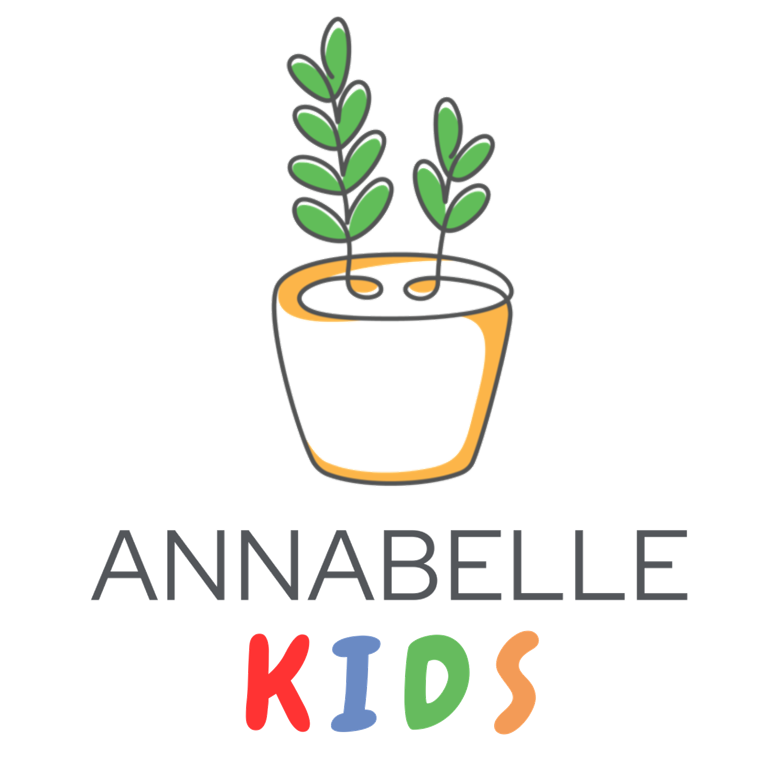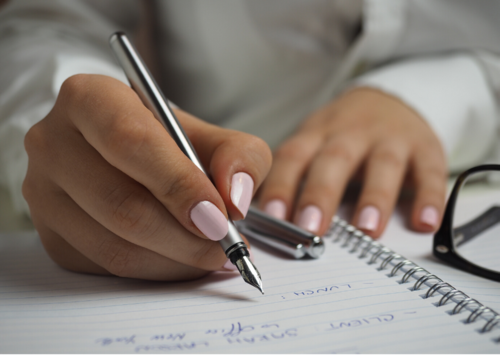Self-Monitoring Behaviour - The What, Why and How
What is Self-Monitoring?
Self-monitoring is the capacity to observe (or measure) and evaluate one’s own behaviour.
It is a crucial component of executive functioning.
Self-monitoring means being able to plan, focus attention, remember instructions, and juggle multiple tasks successfully.
As adults, we often use self-monitoring behaviour. Whether subconsciously or consciously, we often ask ourselves questions to monitor or improve our performance, like “How do I feel?”, “Am I on task?” or “How much time do I have left to work on this task?”.
However, young children cannot naturally self-monitor as it is a skill that develops over time. For example, when young toddlers do not get what they want, they will usually let their mother know by crying and screaming.
Challenges of Implementing Self-Monitoring
Self-monitoring can be difficult for children with ADHD (attention-deficit hyperactivity disorder) as they have difficulties in executive functioning such as decision-making, staying focused, and impulse control.
These children find it more difficult self-monitoring compared to neurotypical children, who still have yet to develop these skills. This is similar for adults with ADHD as well. The result is a lot of impulsive behaviour that can disrupt learning, even if it was not intentional.
While this may be frustrating, remember that self-monitoring is a learnt skill and takes time to develop. It is crucial to provide the support children need to develop these skills. Adults can facilitate the development of a child’s executive functioning such as helping them practice necessary skills before they are able to do so independently.
Why Self-Monitor?
Self-monitoring is an effective tool for improving self-management skills and supporting academic, behavioural, and social development.
In a classroom setting, it teaches children to independently observe and record engagement in appropriate behaviour at a particular time. This strategy is used to increase desired behaviours.
Children who pay close attention to monitoring their behaviour are likely to react to the monitoring data collected and change targeted behaviours in the right direction.
This takes advantage of a behavioural principle: the simple act of measuring one’s behaviour and comparing it to an external behaviour or standard can result in lasting improvements in that behaviour.
A Step-by-Step Process for Implementing Self-Monitoring Behaviour
The process listed below is directed towards a teacher-student relationship. However, it can be tweaked for parents at home.
Self-monitoring requires a child to be an active participant. They will be given the responsibility of measuring and evaluating their behaviours.
-
Before teaching a child how to monitor their behaviour, we need to work together with the child to identify target behaviours that need to be improved. By doing so, we are also teaching them to be more independent and responsible for their actions.
Which behaviours do they think are inappropriate in the classroom? Why do they engage in such behaviour?
Some examples of desirable behaviours:
Focusing on the task or assignment
Making positive statements to classmates
Completing maths problem sums
For each goal behaviour, it should have a clear, specific behavioural definition that provides observable “look-for’s” to indicate when the behaviour is being displayed. You can also role-play with the students examples and non-examples of the target behaviour (e.g. talking out of turn and raising his or her hand and waiting to be called on) to give the student a clearer understanding of when the behaviour is being displayed.
-
There are several ways to record self-monitoring data in the classroom. Below are some ways to record self-monitoring data:
Checklist
Lists behaviour (to be increased) that the student periodically reviews
Checking off behaviours that are displayed during the predetermined monitoring period
Example: A student may have a checklist for independent assignments that contain these 3 work-readiness items
I have all my work materials needed for this task
My desk workspace is organised
I understand the instructions for this assignment
Before beginning an assignment, the student reviews and ensures that these preparatory actions have been carried out
Rating Scale
Consists of 1/more items that a student can use to complete a global rating scale of several behaviours
Generally done at the end of a fixed observation period
E.g., after a class period or at the end of the day
Example: How well did I
(1) stay in my seat
(2) participate in class
(3) avoid distracting others
(4) follow instructions from my teacher?
The scale usually has a qualitative, sliding-scale rating format ranging from “poor…fair…good…excellent”
Frequency Counts
Student keeps a running tally of the number of times that they display a target behaviour
Then tally how often they engage in a target behaviour in a period of time
Seeing the number of times they have engaged in positive behaviours may increase their confidence and self-esteem
Example: Number of times he or she raised hands and waited to be called on
Here are examples of a behaviour checklist, behaviour rating scale and a frequency count!
-
As self-monitoring requires periodical measurements of their own behaviour, both teacher and students have to decide on what schedule the monitoring will occur. Teachers should also gauge the capabilities of their students and decide on a schedule that will work best for them. We recommend starting with an easier one to follow. There are several options for this:
At the start of the school day or class period
Examples of suitable behaviours: arriving to class on time or prepared all required work materials
At the end of the school day or class period
Examples of suitable behaviours: completed behaviour rating scale for class period or day, or copying homework assignments on the board
Scheduled transition points throughout class period or day
Each monitoring episode tied to schedule and easily identifiable “transition point” in classroom setting
Like switching from one learning activity to another
e.g., Independent work to group activity
Examples of suitable behaviours: speed of transition between one activity to another, or general behaviour during these periods
At the start or end of assignments
Examples of suitable behaviours: (start of assignments) checking for presence of all work materials or clearing up desk, (end of assignments) legible handwriting
Fixed intervals throughout the day (like every 15 minutes)
Examples of suitable behaviours: general classroom behaviours, attention, social interactions with classmates, or compliance with teacher’s directions
-
After determining a monitoring schedule with your student, you should then decide on a cue to trigger the start and end of a monitoring session. Types of cues to consider:
Teacher-delivered
may be helpful to use more at the beginning of self-monitoring
so that students learn how to identify own behaviours independently
Example: at the end of a writing assignment, teacher prompts class to review work using self-correction checklists before handing up work
Student-delivered
student is given more independence and responsibility in initiating self-monitoring without aid of their teachers’ instructions
Examples: student monitoring understanding of assigned reading during independent reading tasks, uses a rating scale at least 3 times during activity to record degree of comprehension of the text, or student determining how to space ratings by themselves
Beep tape and timer
less commonly used in Singapore’s schools
teachers may choose to use this method if they think it will be useful
for the beep tape: student is given an audiotape with beeps spaced at fixed intervals (rate matches student’s self-monitoring schedule)
to use a timer: teacher or student sets a timer (e.g., cell-phone timer, stopwatch) for a pre-set interval
when timer rings, student will begin self-monitoring his or her behaviour and timer is reset
Examples:
for beep tape: student monitors his on-task behaviour every 5 minutes, using a self-rating scale, by using a MP3 player with an audio-file beep tape with tones at 5-minute intervals
for timer: if a student is working on an independent maths worksheet in class, they set a timer with vibration setting for 5-minute intervals
-
To motivate students, teachers may choose to reward students when they consistently engage in positive behaviours. They can do so by praising the child with positive comments upon displaying desirable behaviours. They can also reward them with simple tangible rewards (e.g. stationeries).
To figure out desirable rewards for students, teachers can observe the students’ behaviour in their free time (e.g. where they like to go, who they enjoy spending time with, or activities they often engage in) to get strong hints as to what rewards will be desirable for a student.
-
Occasionally, the teacher should check the student’s self-monitoring data and procedures to ensure that he or she is recording accurately. This is especially important at the start of the monitoring when the student is new to this procedure. Random spot checks tend to result in higher quality self-recording data.
-
Over time, the student is likely to achieve his or her behavioural goals. When this occurs, self-monitoring procedures should be faded, that is, gradually simplified or discontinued. This is to streamline self-monitoring goals so that it becomes sustainable over the long term while maintaining the student’s behavioural gains.
Fading strategies may include:
reducing the monitoring questions over time (e.g. reducing a 6-item checklist for monitoring into a single question, “Am I ready to work?”),
changing the monitoring cue to promote independence (from teacher-delivered cues to student-delivered cues) and
monitoring less frequently (e.g. shifting from monitoring daily to monitoring twice per week).


